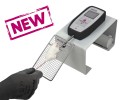Authors
Pierre L. Roubertoux, Catherine Bartoli
Lab
INSERM, Aix Marseille Université, France
Journal
Neuromethods
Abstract
The prevalence of deficit of motor deficits in Autism Spectrum Disorders (ASD) reaches 80 % leading several authors to consider the deficits as an associated syndrome. The deficit impacts the development resulting in a general motor delay. Different adult features are affected in patients that present hypotonia as the more frequent characteristics. Coordination is impaired as well as praxis. Balance deficits and gait particularities as toe-walking are reported but they reach a lower frequency. If ASD patients have a high probability to present at least one motor deficit, the same pattern of motor traits is not impacted similarly in the patients. This is the consequence of the heterogeneity of the diseases included in the ASD category. The awkwardness caused by these deficits and potential alleviation incite to analyze motor deficits in mice models of ASD. The chapter considers motor development modeling from birth to weaning and hypotonia and deficits in coordination, balance, and gait in adult.
BIOSEB Instruments Used:
Grip strength test (BIO-GS3)

 Pain - Thermal Allodynia / Hyperalgesia
Pain - Thermal Allodynia / Hyperalgesia Pain - Spontaneous Pain - Postural Deficit
Pain - Spontaneous Pain - Postural Deficit Pain - Mechanical Allodynia / Hyperalgesia
Pain - Mechanical Allodynia / Hyperalgesia Learning/Memory - Attention - Addiction
Learning/Memory - Attention - Addiction Physiology & Respiratory Research
Physiology & Respiratory Research
 Pain
Pain Central Nervous System (CNS)
Central Nervous System (CNS) Neurodegeneration
Neurodegeneration Sensory system
Sensory system Motor control
Motor control Mood Disorders
Mood Disorders Other disorders
Other disorders Muscular system
Muscular system Joints
Joints Metabolism
Metabolism Cross-disciplinary subjects
Cross-disciplinary subjects Preclinical studies and opioids: role in crisis management in the United States
Preclinical studies and opioids: role in crisis management in the United States 